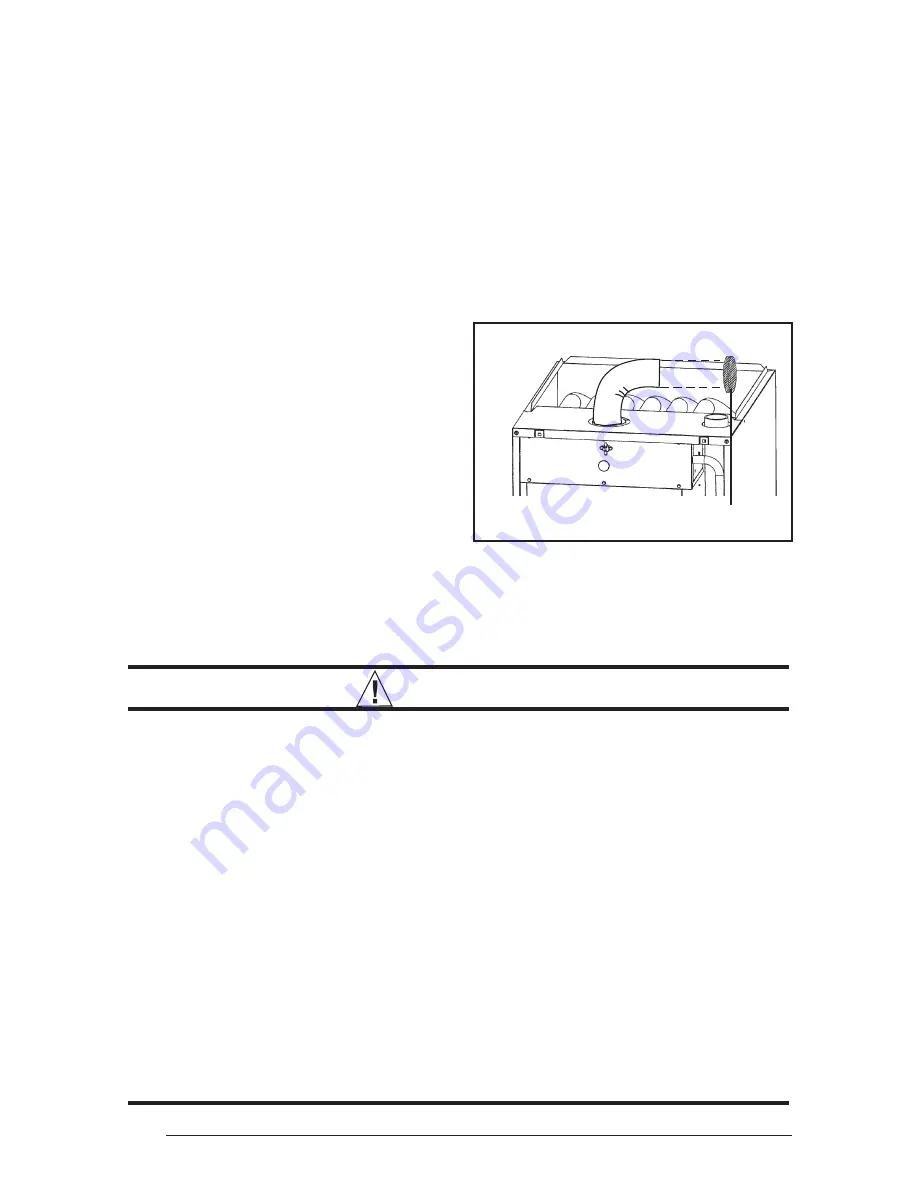
8
Return Air
The return air ductwork may be connected to
any or all of the following: left side return, right
side return, or bottom return.
Where maximum
airfl ow is 1800 CFM or more two openings
must be used.
Determining Nominal AC System
Capacity
In order to select the appropriate airfl ow for AC
operation the nominal system capacity must
be known. The nominal system capacity is
WARNING:
Products of combustion must not be allowed to enter the return air ductwork
or the circulating air supply. Failure to prevent products of combustion from
being circulated into the living space can create potentially hazardous condi-
tions including carbon monoxide poisoning that could result in personal injury
or death.
All return ductwork must be secured to the furnace with sheet metal screws.
For installations in confi ned spaces, all return ductwork must be adequately
sealed and joints must be taped. When return air is provided through the bot-
tom of the furnace, the joint between the furnace and the return air plenum
must be sealed.
The fl oor or platform on which the furnace is mounted must provide sound
physical support of the furnace with no gaps, cracks, or sagging between the
furnace and the fl oor or platform.
Return air and circulating air ductwork must not be connected to any other heat
producing device such as a fi replace insert, stove, etc.
CIRCULATING AIR SUPPLY
Plenums and air ducts must be installed in ac-
cordance with the Standard for the Installation of
Air Conditioning and Ventilating Systems (NFPA
No. 90A) or the Standard for the Installation of
Warm Air Heating and Air Conditioning Systems
(NFPA No. 90B).
If outside air is utilized as return air to the furnace
for ventilation or to improve indoor air quality, the
system must be designed so that the return air to
the furnace is not less than 50°F (10°C) during
heating operation. If a combination of indoor and
outdoor air is used, the ducts and damper system
must be designed so that the return air supply to
the furnace is equal to the return air supply under
normal, indoor return air applications.
When a cooling system is installed which uses the
furnace blower to provide airfl ow over the indoor
coil, the coil must be installed downstream (on the
outlet side) or in parallel with the furnace.
If a cooling system is installed in parallel with the
furnace, a damper must be installed to prevent
chilled air from entering the furnace and condens-
ing on the heat exchanger. If a manually operated
damper is installed, it must be designed so that
operation of the furnace is prevented when the
damper is in the cooling position and operation
of the cooling system is prevented when the
damper is in the heating position.
Figure 4. Protective Screen for
One Pipe Installations
Protective Screen
Upfl ow Models





































